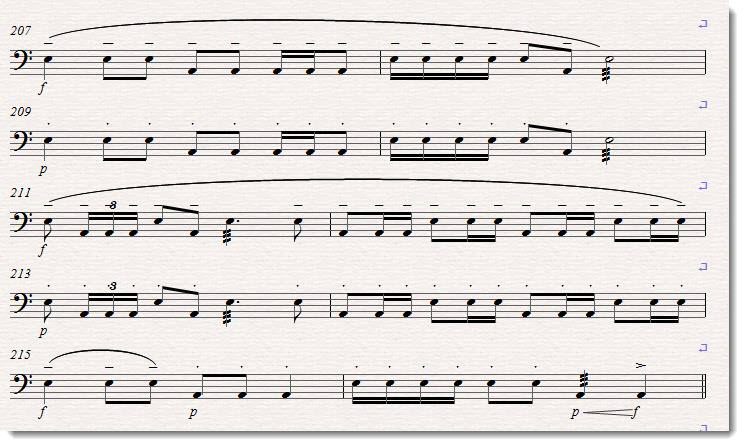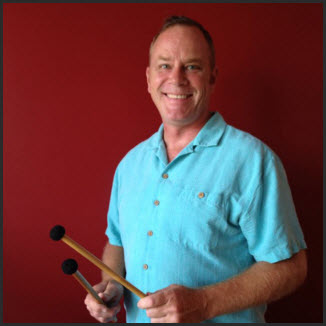Legato and Water
Water flows and never stops moving. Legato passages in music flow from one note to the other.
Staccato and fire
Fire flashes with speed and is hot to the touch. Staccato passages in music sparkle and leap from one note to the other.
These two concepts are difficult to understand without seeing them in action, so take a look at this video and give it a try.
Playing timpani most often involves playing orchestral and band music and not solos, so it’s important that the timpanist learn how to blend their sound with the other members of the ensemble that they are playing with. The timpanist must be able to play legato passages and staccato passages just like the other members of the ensemble can do.
If you’re a brass, string or woodwind player and you’re asked to play legato notes you just play the note longer and if you are asked to play notes that are staccato in nature then you play the notes shorter.
You would use your tongue, breath or bow to make the long note with the bar over it sound long and the short note with the dot over it sound short.
The trouble is for timpani players is that without doing something with our stroke technique all of the above notes can sound alike.
When there is time to do so you can switch to a harder mallet for the staccato strokes, but often times you have to play what’s on the page with what you have in your hands at the moment. This goes both ways of course. You might have some very hard mallets that work great for the staccato section but in order to make things sound legato you’ll have to switch your stroke technique.
Therefore we have to practice these two types of strokes so that we can hear the difference between long and short notes.
Legato Stroke
The Legato Stroke is a round flowing stroke and the player must visualize that each note is connecting to the next even though they really don’t. If the timpanist lets their strokes be fluid and connect like water together then the legato affect will happen.
Staccato Stroke
The staccato stroke is short and separated and the timpanist’s sticks are lifted quickly as if the notes are pulled, plucked or snapped from the drum and move fast like fire. It’s like the drum is hot like fire and if the sticks stay too long on the head they’ll burn. The staccato stroke is a lifting stroke where you pinch the stick in your grip between your thumb and fore finger and snap the stick up from the head as soon as it makes contact.
In the above exercise the first two bars have tenuto lines over the notes with a long phrase line over the entire two bars. I have indicated that these bars are at the forte (f) dynamic and that the staccato bars are marked piano (p), but it should be noted that you can play legato at any dynamic level. It makes it a little easier to differentiate between legato and staccato if the legato is loud and the staccato is soft.
- Play the exercise as written with the first two bars at forte and legato then the second two bars staccato and at the piano dynamic
- Play the exercise as written except for switching the dynamics; legato at piano and staccato at the forte level.
- Think water and flow for legato
- Think fire and that you have to get off the drum quickly for staccato
How to Choose Your Mallets for Legato and Staccato
You can use hard sticks for staccato and softer sticks for legato sound, but you need to be able to produce either sound with any mallet that you have at the moment. If your mallet is hard it’s pretty easy to play staccato sounds but you have to really let your stroke become more round and flowing to play legato.
Vice versa, it’s easy to make a legato sound when you have a medium or soft mallet, but you have to work really hard to make the staccato notes speak properly.
- Practice using a medium hard mallet
- Practice using a very hard mallet
- Practice using a soft mallet
Ready for More Advanced Practice Exercises?
Here is a more advanced and challenging exercise to work on to help you distinguish between legato and staccato: Advanced Exercise for Legato and Staccato Playing
- Use alternate sticking as much as you can
- Play the tenuto marked notes with a flowing legato stroke
- Play the staccato marked notes with a sharp lifting stroke



Your lessons are so clear. Thank you! I have never played timpani before and now am looking forward to trying out all your free lessons at our next rehearsal! Thanks again!!
Connie,
Thanks for the feedback and I’m glad you like the lessons.